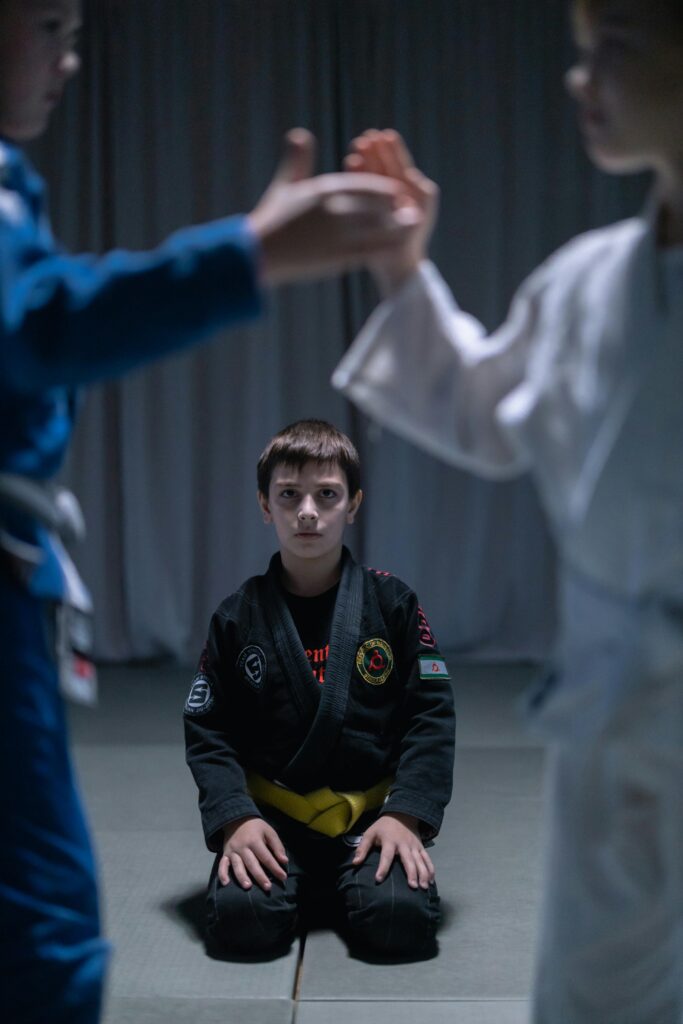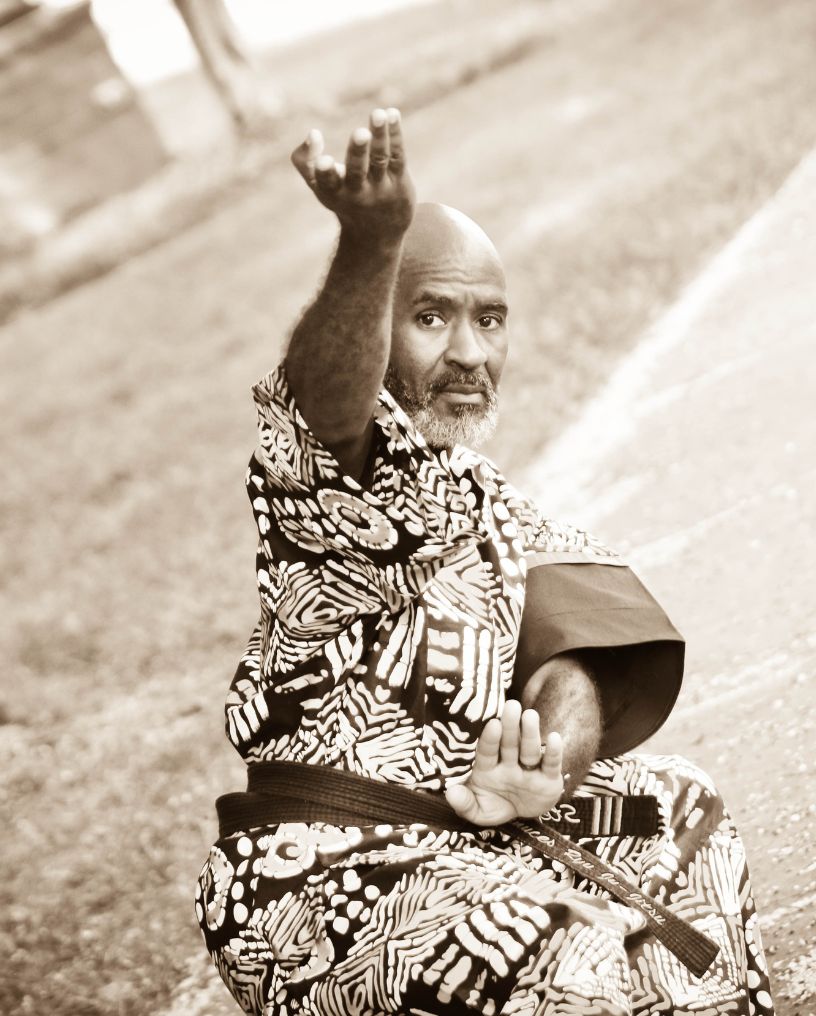When someone throws a punch, your instincts kick in, but instincts alone might not be enough to protect you. Learning how to defend yourself from a punch can boost your confidence and keep you safe in real-world situations.
Whether it’s blocking or evading, understanding these techniques and practicing them regularly can mean the difference between staying safe or getting hurt.
In this guide, we’ll walk you through practical, easy-to-learn methods to block or evade punches, explain the science behind it, and show you how to adapt these techniques to real-life scenarios.
The Science Behind a Punch
To effectively defend against a punch, it’s crucial to know exactly what’s coming at you. Punches are fast, powerful, and often unpredictable, but when you break them down, you’ll see patterns and mechanics that you can prepare for.
This knowledge allows you to anticipate an attack and react in a way that keeps you safe.
What Makes a Punch Powerful?
A punch’s power doesn’t just come from the arm; it’s the entire body working together. Most punches start at the feet, where a solid stance drives energy upward.
The rotation of the hips and shoulders amplifies the force, which is then released through the arm and fist. This combination of speed, momentum, and body weight gives punches their impact.
Common punches like jabs, hooks, and uppercuts each use this power differently, which means you’ll need varied strategies to defend against them effectively.
Why Timing Is Critical
When it comes to punches, reaction time is everything. Even a slight delay can leave you vulnerable to a hit. Training your reflexes through drills is one of the most effective ways to improve your timing.
For example, practicing with a partner who throws punches at different speeds forces you to adjust quickly.
Reflex training tools, such as reaction balls, can also sharpen your ability to anticipate and respond to punches, giving you a critical edge in self-defense.
Recognizing Punch Angles
Not all punches come straight at you. Jabs typically move in a direct line, but hooks swing from the side, and uppercuts rise from below. Each angle requires a different defense.
By training to recognize the trajectory of a punch as soon as it begins, you give yourself the best chance to block, parry, or evade it. This skill is essential for staying one step ahead of your attacker.
Setting Yourself Up for Success
Effective defense doesn’t start when the punch is thrown—it begins with your preparation. A combination of awareness, positioning, and mental readiness ensures that you’re not caught off guard.
By setting a strong foundation, you increase your ability to respond effectively and protect yourself in any situation.
Develop Awareness
Self-defense begins with paying attention to your environment. Most threats don’t appear out of nowhere; they build gradually through cues like aggressive tone, body language, or sudden movements.
By staying alert to what’s happening around you, you can recognize these signals early and either diffuse the situation or prepare yourself to act.
This habit, once practiced regularly, becomes second nature, significantly reducing your risk of being caught off guard.
Position Your Body Correctly
Your stance is your anchor in a confrontation. It allows you to stay balanced, react quickly, and withstand force. To achieve this, keep your feet shoulder-width apart, with one slightly ahead of the other.
Bend your knees slightly to stay agile, and distribute your weight evenly. Raise your hands to guard your face and torso, with your elbows close to your body for added protection.
A solid stance not only helps you block and evade punches but also keeps you ready to counter if needed.
Train Your Mind for Calmness
Your mental state is just as important as your physical readiness. Fear can slow your response time, cloud your judgment, and make you an easy target.
Training yourself to stay calm under pressure is key. Visualization exercises work wonders here.
Picture yourself in a confrontation, staying composed and responding effectively to each punch. Practicing controlled breathing during stressful drills can also help you maintain focus and clarity in real-life situations.
Learn Simple Defensive Movements
Defense doesn’t have to be complicated to be effective. Start with straightforward techniques like keeping your guard up and pivoting your body. These actions allow you to protect vital areas while staying mobile.
Practicing these movements regularly helps you build muscle memory, making your responses automatic in a real situation.
The more familiar these movements feel, the more confidently you’ll be able to use them under pressure.
Techniques to Block and Evade a Punch
Once you’ve built a solid foundation, it’s time to move on to mastering specific techniques for defense. The right moves can save you from harm and help you stay in control during an altercation.
Blocking Techniques That Work
Blocking is your first line of defense. It neutralizes the force of a punch and prevents it from landing where it can hurt you most. These techniques focus on quick, deliberate movements that protect vital areas.
High Block
Raise your forearm to intercept punches targeting your head. Keep your elbow bent and your wrist aligned, as this structure absorbs the impact without injuring you. This move is crucial for blocking straight jabs or hooks aimed high.
Low Block
Sweep your arm downward to deflect punches aimed at your midsection. Rotate your torso slightly to add power to the motion and keep your balance. This technique works well against punches or grabs aimed at your torso or lower body.
Parrying
Use a quick, controlled push of your hand to redirect the attacker’s punch away from its target. Instead of meeting force with force, you guide the punch’s energy to the side. Parrying not only protects you but also creates an opening for a counter if needed.
Evasion Techniques for Safety
Sometimes, the best defense is simply not being there when the punch lands. Evasion allows you to avoid the force entirely and position yourself better for your next move.
Side-Step
Move laterally to get out of the punch’s trajectory while staying balanced and ready. A quick side-step disrupts the attacker’s rhythm, giving you an opportunity to reposition or create space.
Duck
Bend your knees to lower your body beneath the punch. This technique is particularly effective against hooks or wide swings. Make sure to maintain your balance and be ready to rise quickly if needed.
Slip
Tilt your upper body slightly to one side to make the punch miss by just a fraction. This subtle movement keeps you in range for a counterstrike if necessary and minimizes your energy expenditure.
What Comes After Defense
Once you’ve blocked or evaded a punch, your next steps are critical. Your actions should prioritize safety and control.
Create Distance
Step back or move sideways to put space between you and your attacker. Distance reduces the chance of follow-up punches and gives you more time to assess the situation.
Use Verbal Commands
Assertive verbal cues like “Stop” or “Back off” can deter further aggression. Your tone and confidence play a huge role in de-escalating the situation.
Employ Countermeasures
If the threat persists, consider safe, minimal countermeasures like a quick push to create space or a controlled strike to neutralize the attacker. Always aim to protect yourself without escalating unnecessarily.
Practicing to Build Confidence
Practicing these techniques makes them second nature, so you don’t hesitate in a real situation.
Solo drills like shadowboxing allow you to practice blocks, dodges, and slips at your own pace. Use a mirror to check your form and refine your movements. Partner drills are even more effective, as they simulate real-time reactions.
Start slow to focus on accuracy, then gradually increase speed and intensity. Repetition is key—it helps you internalize these moves so they become instinctive under pressure.
Applying Defense Techniques in Real Life
Adapting your techniques to real-world situations is essential for effective self-defense. Different scenarios require tailored responses, but the core principles remain the same.
Managing Multiple Attackers
Dealing with more than one person can feel overwhelming, but staying calm and strategic makes all the difference.
Position yourself so one attacker is always in front of you, which limits their ability to surround you. Use quick footwork to stay mobile and keep adjusting your angles.
This strategy forces attackers to come at you one at a time, giving you a better chance to defend yourself.
Use Your Surroundings
Your environment can offer valuable tools for self-defense. Walls or tables can act as barriers to keep attackers at bay.
Everyday objects like bags, chairs, or even a rolled-up jacket can serve as shields or distractions. Throwing an object can briefly confuse your attacker, giving you time to escape or gain control.
Adjusting for Your Strengths
Your physical build and strengths play a big role in determining which techniques work best for you. Smaller individuals might focus on speed and precision to evade and counter effectively.
Larger individuals can use their weight and stability to absorb or deflect attacks while maintaining a strong base.
The key is to adapt moves that feel natural and align with your physical abilities, ensuring you can execute them confidently.
Avoiding Common Pitfalls
Even with training, mistakes can happen. Freezing up under stress is a common issue, but practicing regularly builds confidence and reduces hesitation.
Overextending during a block or counter can leave you off balance, so focus on controlled movements.
Lastly, anticipate follow-up attacks—staying one step ahead keeps you safer and more in control.
Learn Smarter, Not Harder, with Personalized Defense
Self-defense isn’t just about reacting to danger; it’s about equipping yourself with the skills and confidence to handle anything life throws at you.
By mastering techniques to block or evade punches, you’re already taking a significant step toward your safety and empowerment. But why stop there?
At Eye2Eye Combat, our private defense training gives you the one-on-one attention you need to refine these skills and adapt them to your unique strengths.
Explore a tailored approach to self-defense that works for your lifestyle—because safety starts with you. Book your first session today and take the next step in your self-defense journey!
FAQs
How to defend against a straight punch?
To defend against a straight punch, position your hands up in a protective guard and watch the punch as it comes. A quick parry—using your hand to redirect the punch to the side—works well. You can also move slightly off-center, stepping or slipping to avoid the strike while maintaining your balance.
How do you block a punch fast?
Blocking a punch quickly comes down to practice and staying calm. Keep your hands up, elbows close to your body, and focus on the attacker’s chest to spot movement. Use simple blocks, like raising your forearm to shield your head or torso. Regular drills help you react instinctively and without hesitation.
How to defend yourself from getting punched?
Avoiding a punch starts with awareness and distance. If someone gets aggressive, maintain a safe space and keep your hands up in a neutral guard position. Use movements like slipping, ducking, or side-stepping to evade the punch. If blocking is necessary, use your forearms to absorb the impact and create space.





